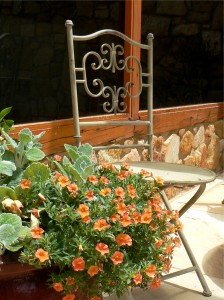Low Allergy Gardens
- 25
- Aug
If you want to enjoy the outdoors in the beautiful spring weather then simply getting outside and into the garden or relaxing on the veranda sounds like a terrific idea.
For those with Hay fever or Asthma this beautiful time of year is less appealing.
Working for clients has led me to read books covering Low Allergy Gardens and speak to allergy sufferers over the years and it seems obvious that a good design should aim to reduce the triggers.
This can be factored in when people know what the triggers are for them or more commonly, when people are not sure of what ‘sets them off’; then the strategy is to avoid the typical triggers of pollen, fungal spores and strong perfume.
Designing out the triggers.
Designing to reduce the triggers is about plant selection, microclimate modification and garden management.
Plant selection.
The degree to which we remove possible triggers will be very specific to the individual. Removing all wind pollenated plants that produce copious quantities of pollen and avoiding all perfumed plants is definitely an option for a design that makes controlling hay fever a priority.
A less strict option would be to avoid plants with a common history of triggering symptoms in people and using others that are less likely to cause symptoms only in sensible and considered locations in the garden. Avoiding planting plants that may cause symptoms near washing lines, paths, house doors and windows and other high traffic or sensitive areas makes good sense.
Microclimate modification.
Wind reduction is likely to be useful modification especially if pollen is the issue and is blowing in from outside sources. Well-chosen and managed plantings can deflect the wind and reduce airborne particles.
Garden management- it can be so easy and make such a big difference.
If you have plants where their pollen is a problem then prune the flower buds off before they open and the problem is solved, it is as simple as that. The plant leaves are not the problem (or very rarely, an example being Plane trees) so pruning is safe. Photinia plants for example are a commonly identified trigger. If used as a neat hedge and kept at a manageable size then timing the clipping so that it also removes the flower buds is an easy solution. It is so simple to do and makes such a big difference.
With grass pollen and dust the two keys are to manage the lawn so it has good cover, mow often enough so it isn’t flowering and mow while the grass is damp not dry.
I have been to gardens where hay fever sufferers have been putting up with symptoms for years and simple solutions have been there all along. If you are not sure what plants are what and where they should be then get some proper advice.
Spring is a beautiful time of year- let’s hope everyone can enjoy it.

